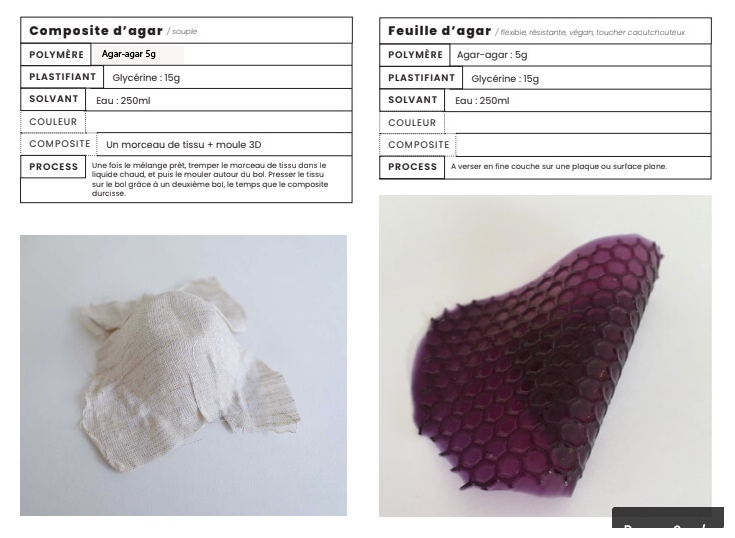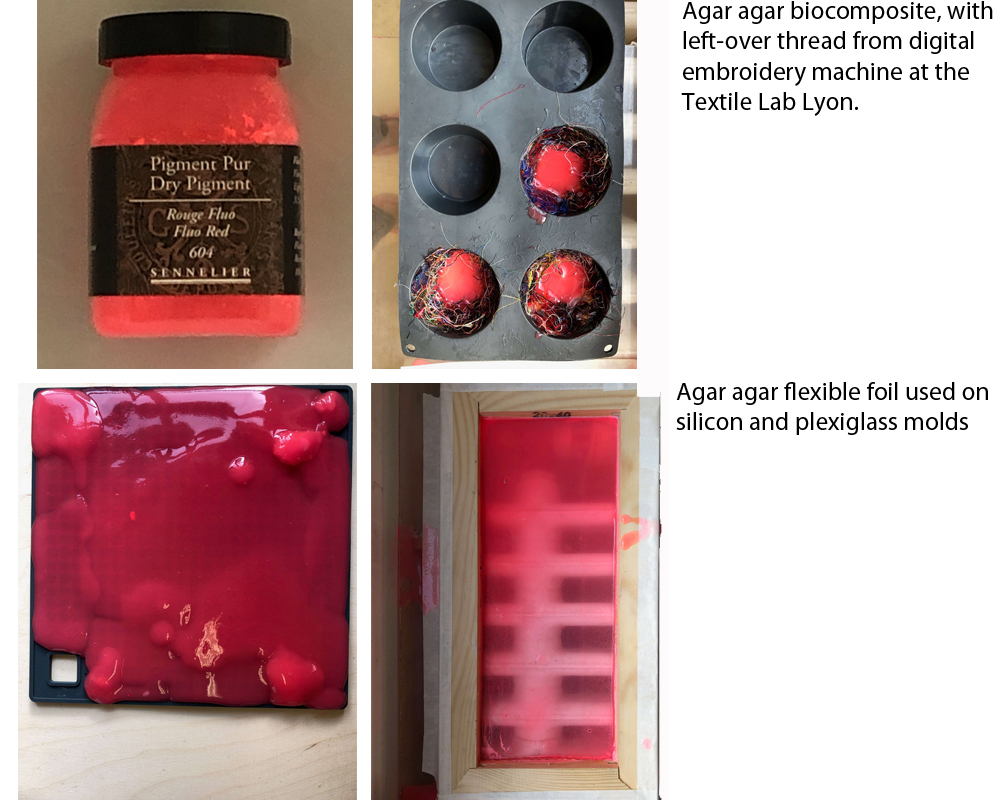6. BioFabricating Materials¶
This week we learned about fabricating Biomaterials as a means of creating alternatives for a future we want to live in. Our societal's use and abuse of plastic, renders it a problem since it is a substance that the earth cannot digest.
Research¶
I was moved by the lectures given by Adele Orcajada, Cecilia Raspanti and Lorena Trebbi. I particularly like when lorena talked about the evolution of sustainable design towards product design that is cyclical, ephemeral and alive. Celebrating the transitory nature of materials and products, instead of the programmed obsolescence of standardized mass production that we have grown accustomed to.
Here are some examples both new and older that are inspiring in terms of biodesign.
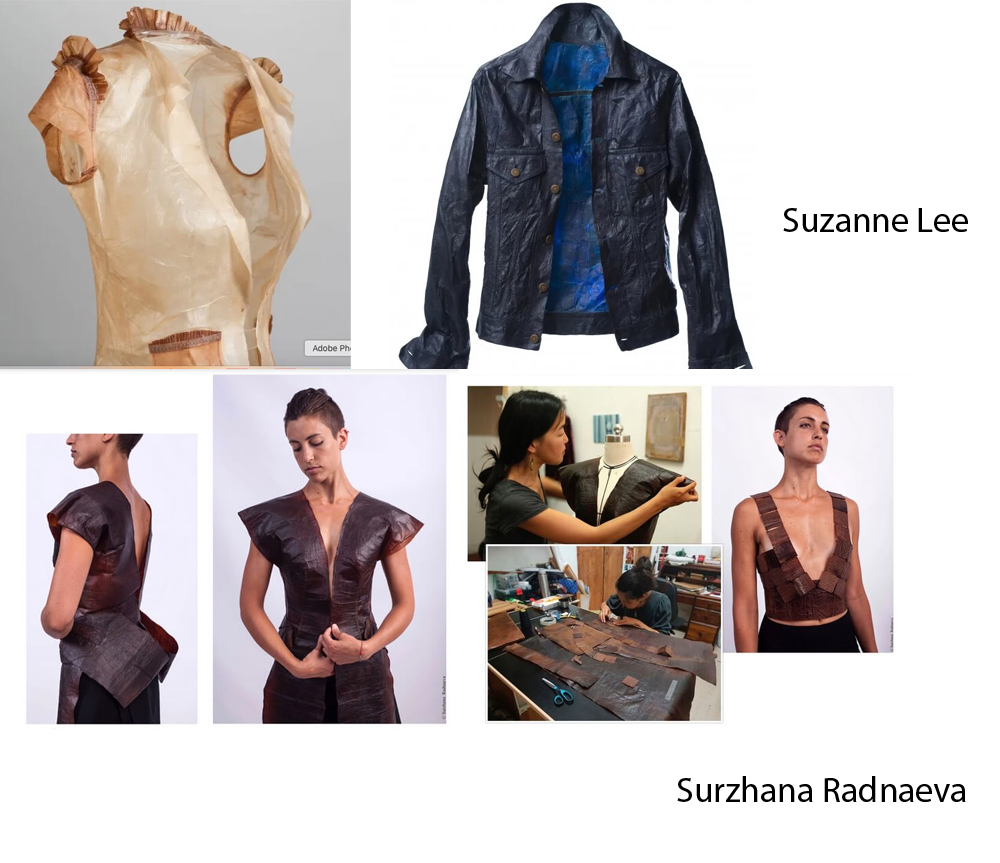 Also I saw from Pr. Kim Poldner's recent Linkedin post that there was what looks like a fabulous biodesign display during the recent Dutch Fashion Week.
Also I saw from Pr. Kim Poldner's recent Linkedin post that there was what looks like a fabulous biodesign display during the recent Dutch Fashion Week.
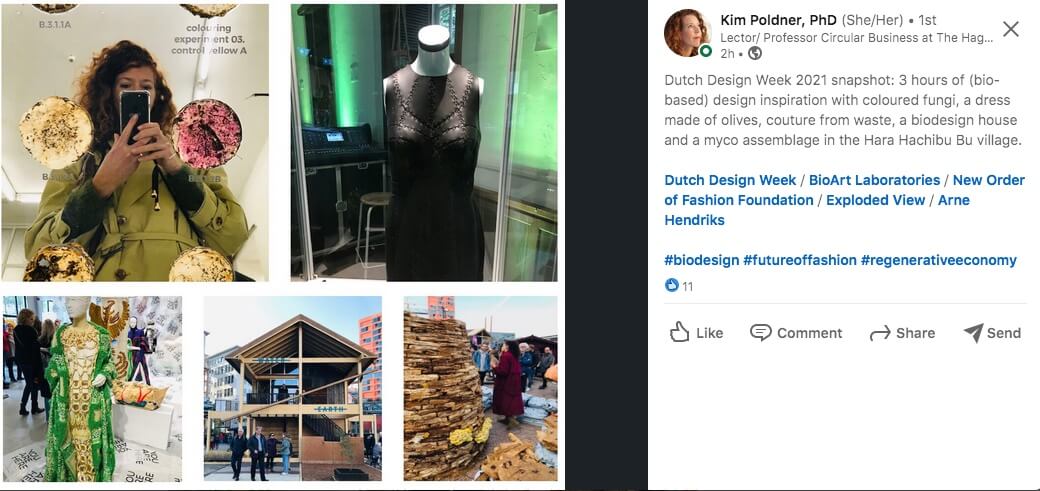 - Dutch Design Week
I'm also inspired by all the packaging applicaiton that can be invented:
- Dutch Design Week
I'm also inspired by all the packaging applicaiton that can be invented:

Getting started¶
Per Cecilia's class notes.
- Dutch Design Week
I prepared my available materials
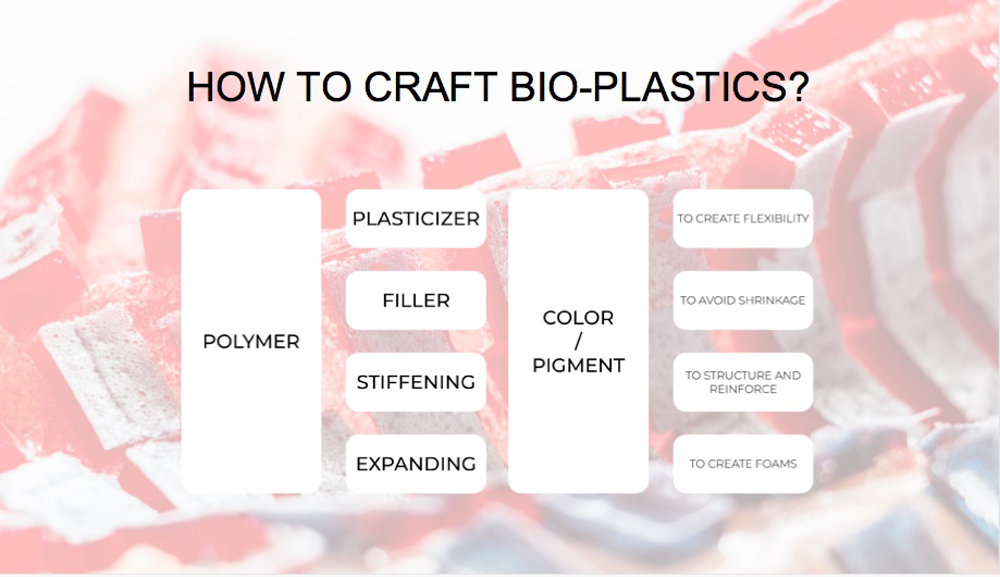

Inspired by Beatriz Sandini,I recorded my recipes and adaptations on a google sheet. Here is the link to the recipe adapations I made (I added a new sheet to her sheet): - kombucha recipes (tea and beer) - Bio plastic from tumeric dye and agar Bioplastic with agar recipe - Alginate Flexible bio-sheet - My biomaterial recipe adaptations
Making Kombucha leather¶
I decided to make black tea Kombucha brewed with hibiscus flowers, and beer Kombucha with madder pigment. I was surprise to have to add 8 soupspoons of vinegar to get a PH of 2,5-3,5.
Recipe for Kombucha with tea:¶
- 1l of water
- 3 teabags
- 100grs of sugar
- Vinegar q.s (for PH adjustments until reaching 2.5-3.5)
- Scoby
Recipe for Kombucha with beer:¶
- 500ml beer
- 500ml water
- Vinegar q.s (for PH adjustments until reaching 2.5-3.5)
- Scoby
Recipe for Kombucha with wine:¶
- 75cl wine
- 100grs of sugar
- Vinegar q.s (for PH adjustments until reaching 2.5-3.5)
- Scoby
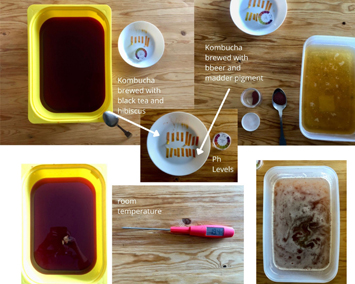
Alginate flexible bio-sheet¶
I used the recipe from class to make Alginate flexible biofoil
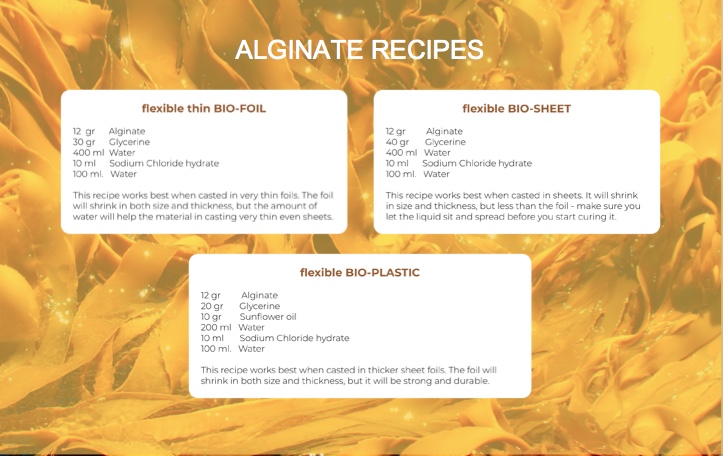 But somehow my bio-chemist colleague and me ended up with dubious results. A far cry from the exciting and pristine biomaterials presented in class. Perhaps inspired by the Halloween spirit, we found a surprising new application.
But somehow my bio-chemist colleague and me ended up with dubious results. A far cry from the exciting and pristine biomaterials presented in class. Perhaps inspired by the Halloween spirit, we found a surprising new application.
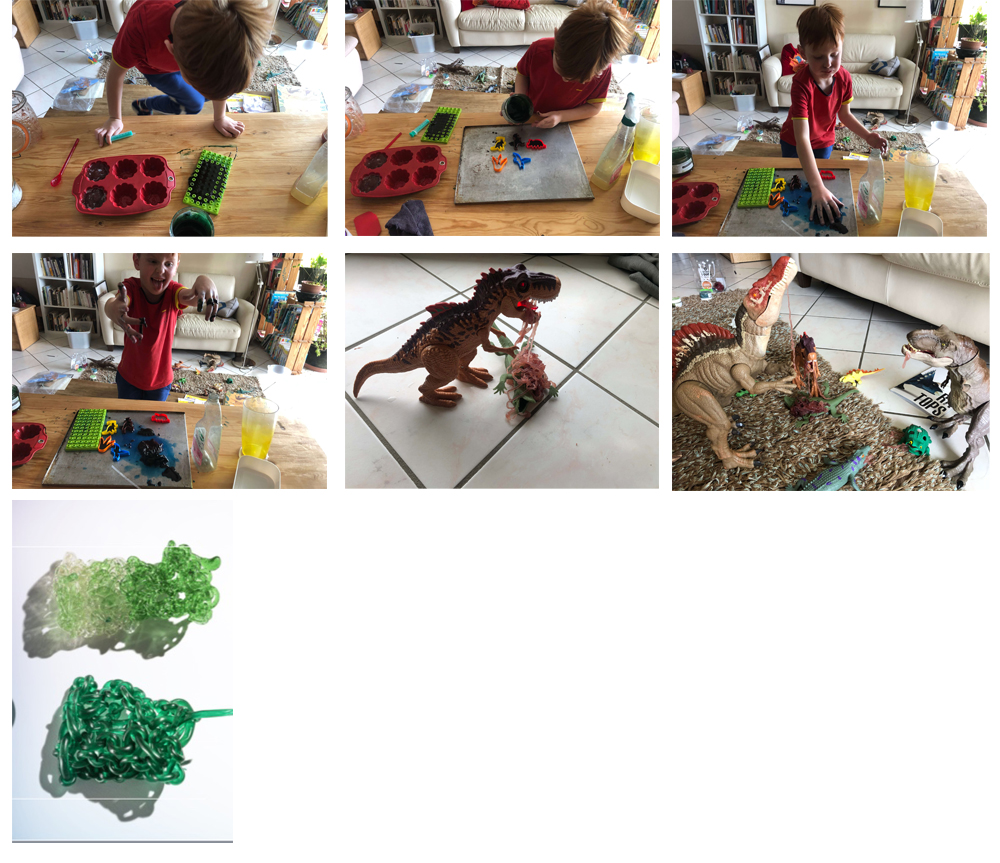
A week later¶
 the tumeric agar bioplastic is not a success. The tea-hibiscus kombucha seems to be undergoing transformation, however the beer one doesn't seem to have any activity, so I added 100grs of sugar to it.
the tumeric agar bioplastic is not a success. The tea-hibiscus kombucha seems to be undergoing transformation, however the beer one doesn't seem to have any activity, so I added 100grs of sugar to it.
Biocomposites¶
Using the recipes from the week on biomaterials I experimented with making composites with textiles. Here is the link to the cookbook that Diane Wakim and Pauline Gamore have compiled.
